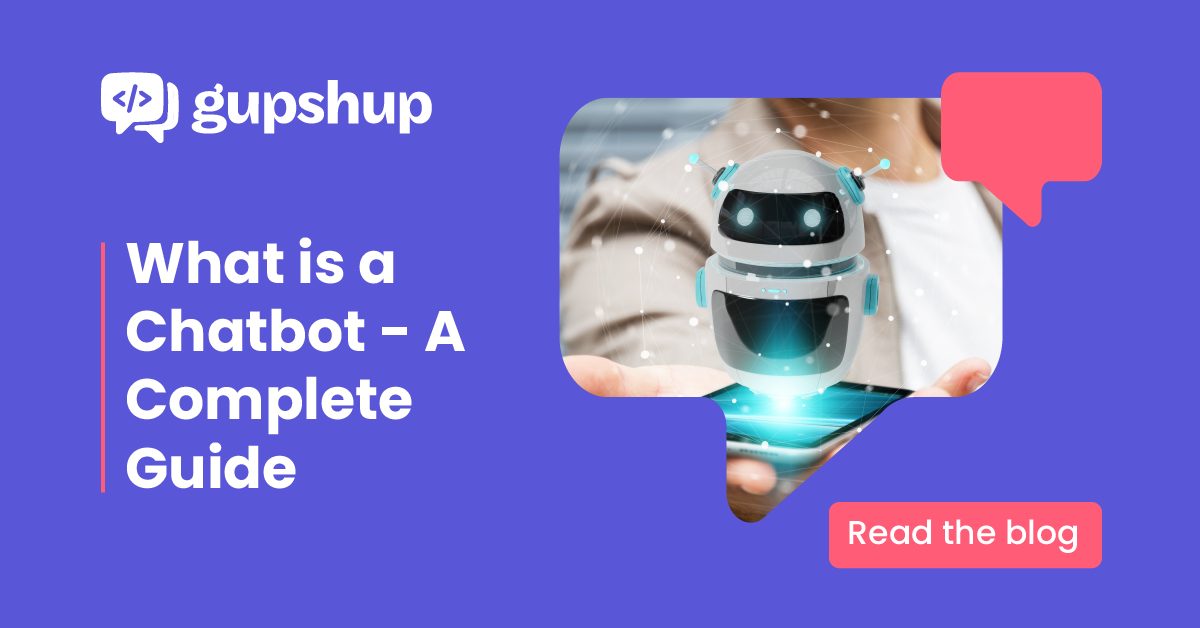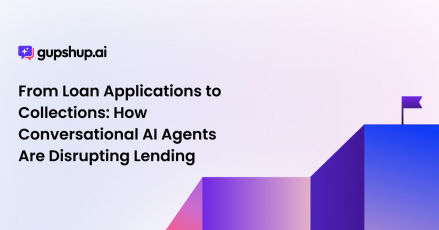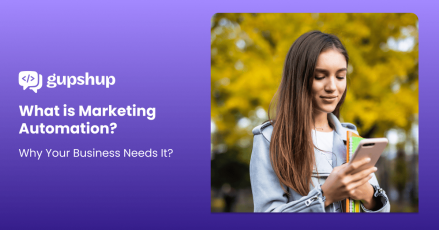What is a Chatbot – A Complete Guide

Chatbots online have become a very common and in-demand function for websites, portals, and platforms in 2021. With the evolution of AI and its implementation across various domains, chatbots have emerged as one of the most imperative tools to improve the user experience for businesses across the globe.
The widespread use of chatbots has only made it clear how important they are in today’s day and age. For instance, a recent survey by Invespcro pointed out that over 67% of global consumers have in some way interacted with a chatbot. Another study from Drift also highlighted that over 40% of consumers worldwide use conversational marketing tools like chatbots to make purchases online.
So, how do chatbots work, and how can you use them to boost your business capabilities? Let us dive in.
What is a Chatbot?
A chatbot, in simple terms, is a conversational computer program, which is programmed to interact with humans with a multitude of input and output methods, like text, voice, touch, and gesture.
Initially, chatbots used to serve the customer service environment; however, they have now evolved and played crucial roles across multiple domains to increase business efficiencies. They are referred to by many names, such as AI chatbots, conversational interfaces, AI assistants, virtual assistants, and more. And just like they are termed many different things, they serve varied purposes with varying levels of intelligence.
Why Use Chatbots?
A basic chatbot online can serve varying purposes, such as answering FAQs, assisting users in their transactional journeys, or providing relevant links to the users searching for something on a website.
However, AI chatbots online with a more robust framework can offer various advanced features like filling slots, completing transactions, taking orders, or even assisting the users in finding the resources they are looking for in a website. Chatbots have been helping businesses improve their efficiencies for a long time by providing a sophisticated and intelligent experience.
For a novice, here are a few compelling facts about why chatbots are the future:
- Over 55% of the businesses worldwide reported generating high-quality leads with the help of chatbots.
- Advanced AI chatbots online have helped businesses save over 30% of the costs in the customer service segment.
- According to Juniper Research, chatbots are predicted to save over 2 billion hours for businesses by 2023!
Now that we have explored why chatbots are important, let us dive into how they work.
How Does a Chatbot Work?
There are many ways in which chatbots function. Depending on their function, there are various mediums in which chatbots interact with humans. For example, voice-based chatbots process the voice data into text by implementing Automatic Speech Recognition (ASR). The text input is then put through a process of quick analysis, and then a response that best fits the case gets delivered to the user.
The responses can go through another stage of fine-tuning based on the format preferred by the user. To carry on the previous example, a voice-based chatbot can respond in voice format using Text to Speech software. This is how a chatbot works.
While this may sound simple, human interactions are quite complex for any technology. To make them more nuanced, AI chatbots use various technologies. So, what are AI chatbots, and how do they work? For starters, they use natural language domains to make their responses more nuanced and accurate. There are three ways in which an AI chatbot online does this:
1. Natural Language Processing (NLP)
NLP is a technology that processes the inputs from the users and converts them into complex sentences or words. This process helps in the standardisation of text. It can help break down the user input and allow the chatbot to understand it. For example, correcting any spelling mistakes to help the chatbot differentiate between verbs and adjectives, to help it understand the sentiment of the user.
2. Natural Language Generation (NLG)
A chatbot uses the NLG technique to deliver off-script responses to the users. The chatbot goes through third-party databases, back-end systems, and data repositories in its access to generate the most suitable answer to the user input.
3. Natural Language Understanding (NLU)
NLU helps the chatbot understand the users’ intent by determining various language objects, like synonyms, lexicons, phrases, etc. The algorithms then construct a seamless dialogue flow, which helps the chatbot create a proper response for the user input.
Using Conversational AI technology, NLP and NLU can be upgraded to a whole new level which can help businesses in delivering realistic responses. Creating advanced dialogue systems can be accomplished by automating various elements of contextual understanding, utilizing memory and databases, and setting up the personal preferences of the target audience.
What are the Different Types of Chatbots?
There are primarily three types of chatbots that businesses use based on their requirements:
1. Rule-Based Chatbots
Often referred to as linguistic-based chatbots, these are the most common ones out there. These advanced chatbots deliver finely tuned and defined conversational experiences to the users. While they do not have as much flexibility as other chatbots, they offer a more controlled overview of the responses to the businesses.
The conversational flows of these chatbots rely on the if/then logic, which makes them the best option for corporate firms looking to create conversational FAQ bots on their channels like Facebook Messenger or WhatsApp Business.
2. Machine Learning Bots (AI Chatbots)
AI chatbots are the more advanced and complex versions and offer much more flexibility and customisations. These are more than task-oriented chatbots, and provide a more personalised experience to the users.
These use predictive intelligence and analytics to provide a holistic conversational experience to the users based on their preferences and history. Using statistical algorithms and NLP, AI chatbots are one of the most powerful tools for businesses looking to have an advanced digital assistant on their hands.
3. Hybrid Chatbots
As the name suggests, hybrid chatbots bring the best of both linguistic and AI chatbots together. Enterprises looking to deliver highly complex conversational solutions with their chatbots use these chatbots. These are often integrated with business-relevant AI applications to enhance the user experience and add more to the application capabilities.
Now that you know what are AI chatbots, let us take a deeper dive into what they can do for you.
Benefits of Chatbots
In the 21st century, quick and efficient resolutions are what converts users into customers. Advanced AI chatbots have a unique tendency to be intuitive in responses and provide quick solutions to the users. It helps businesses in gathering valuable customer information and delivering high-end CX. Here are a few benefits of using chatbots online for your business:
1. Driving Revenue
AI chatbots can guide customers through their buying journey quite efficiently. It helps businesses in quickly driving sales and converting customers without any human effort. Chatbots can easily remember customer preferences and guide them through the process by offering personalised tips and helping to upsell your products or services.
2. Reducing Costs
By enabling businesses to serve a multitude of customers at once without much human intervention, chatbots are very effective in optimising online operational costs. Chatbots online can elevate the First Call Resolution (FCR) rates for businesses to over 75%!
3. Enhancing Skills of Staff
The great thing about reducing overhead is that your staff can focus on other tasks. Chatbots automate most of the tasks like social media messaging, SMS, calls, emails, and much more. It frees up a lot of time for the staff to shift their focus on developing other skills to convert high-value customers.
4. Round the Clock Availability
You can conveniently provide conversational services to your customers 24/7. Cloud-based chatbots can function round the clock and can offer valuable services to customers from anywhere in the world, anytime.
5. Increasing Customer Loyalty
With chatbots, you can easily deliver a frictionless experience with quick responses to meet your customers’ demands. It improves customer satisfaction significantly and is paid for by loyalty. Even a minimal 2% increase in the customer retention rate can have a better effect on your business than decreasing the overall costs of your services or products by 10%.
6. Better Engagement
An engaged and satisfied customer makes purchases 90% more frequently as compared to an average customer. They also spend 60% more per purchase than an average customer. Customers have now started to shift towards online communication with quick responses as a sign of their interest and engagement, which chatbots can help businesses achieve.
7. Better Understanding of Customers
Conversational data gathered from user interactions by chatbots holds a lot of value for businesses. With deep analytics, businesses can better understand their customer sentiments, understand trends, and gain valuable insights about customer behaviour. This can help businesses in refining their marketing efforts and making their customer experience better.
Now that we know why they are important, let us take a look into how to build chatbots.
How to Create a Chatbot
If you are wondering how to create a WhatsApp bot for your business or any other channel, let us dive right into how you can build one yourself.
The best part here is that with an API partner like Gupshup, there are minimal efforts involved in creating one and making it live within hours!
Implementing a chatbot across your preferred platform with Gupshup is quite easy, and does not require much assistance from engineering to ensure that the chatbot performs well across the tech stack you operate with.
Additionally, these are not basic chatbots – You can personalise them and add advanced AI features from Gupshup’s advanced conversational messaging tools!
Here is how you can make a flow chatbot for your business in a few clicks:
Step 1 – Log in to Gupshup
Step 2 – Go through the various simple graphic interfaces available for creating a bot for your business
Step 3 – Choose the one that fits your use case, and select additional customisations based on your requirements
Step 4 – Integrate the various NLP capabilities in your chatbot to enhance its capabilities, and manage the dynamic response variations to manage small talks and guided user journeys
Step 5 – Utilise the tree view function to navigate through the various complex bot interactions and flows
Step 6 – Use the Instant Preview feature to test out various templates and customisations with the integrated chat preview options to test it before going live
Step 7 – Integrate your chatbot across 20+ channels and publish your chatbot on the channels conveniently
Your chatbot is now live!
If you are wondering how to make/create a chatbot in Python, Gupshup also provides a sleuth of advanced developer tools along with a cloud-based integrated development environment (IDE).
Time to Build the Perfect Chatbot
Now that you know all the relevant information about chatbots and what are chatbots used for, it is time to assess which type fits your requirements the best, and build one for yourself. With Gupshup, you can conveniently create a chatbot and use it across various channels within a few clicks.
With an array of tools and features in Gupshup’s conversational API solutions, you can integrate chatbots with over 30 channels and start gaining superfluous results within no time. To get started with chatbots online, talk to our experts, who will guide you through the process and help you choose the best option based on your requirements. LetsGupshup
- Real Estate Chatbot Use Cases and Examples for 2024
- Healthcare Marketing Chatbot: Redefining Patientcare with Conversational AI
- Chatbots in Banking: Enhancing Customer Service During the Festive Season
- Beyond Claims: How Are Insurance Chatbots Changing the Industry?
- Chatbot for Education: How Chatbots are Enhancing Student Engagement




